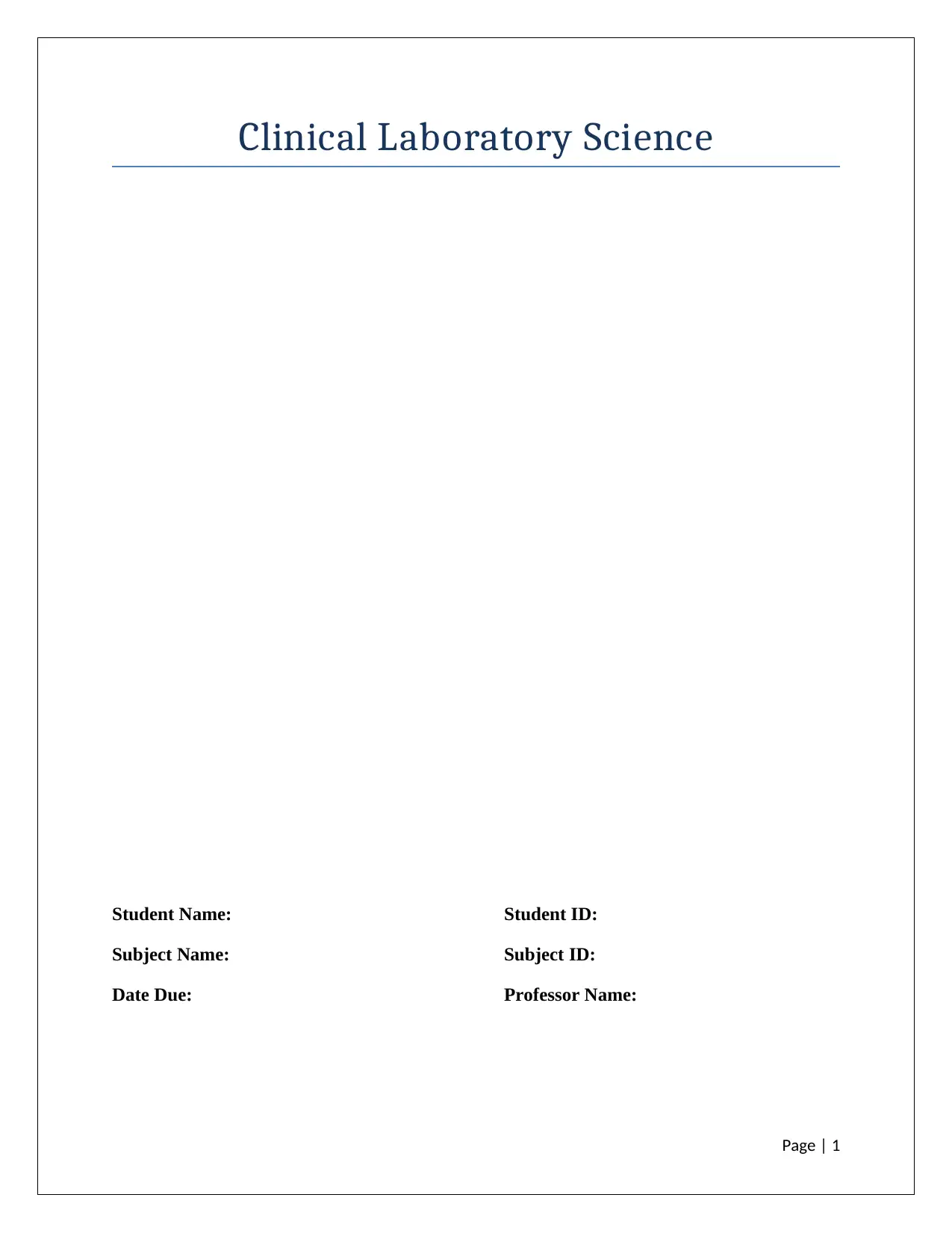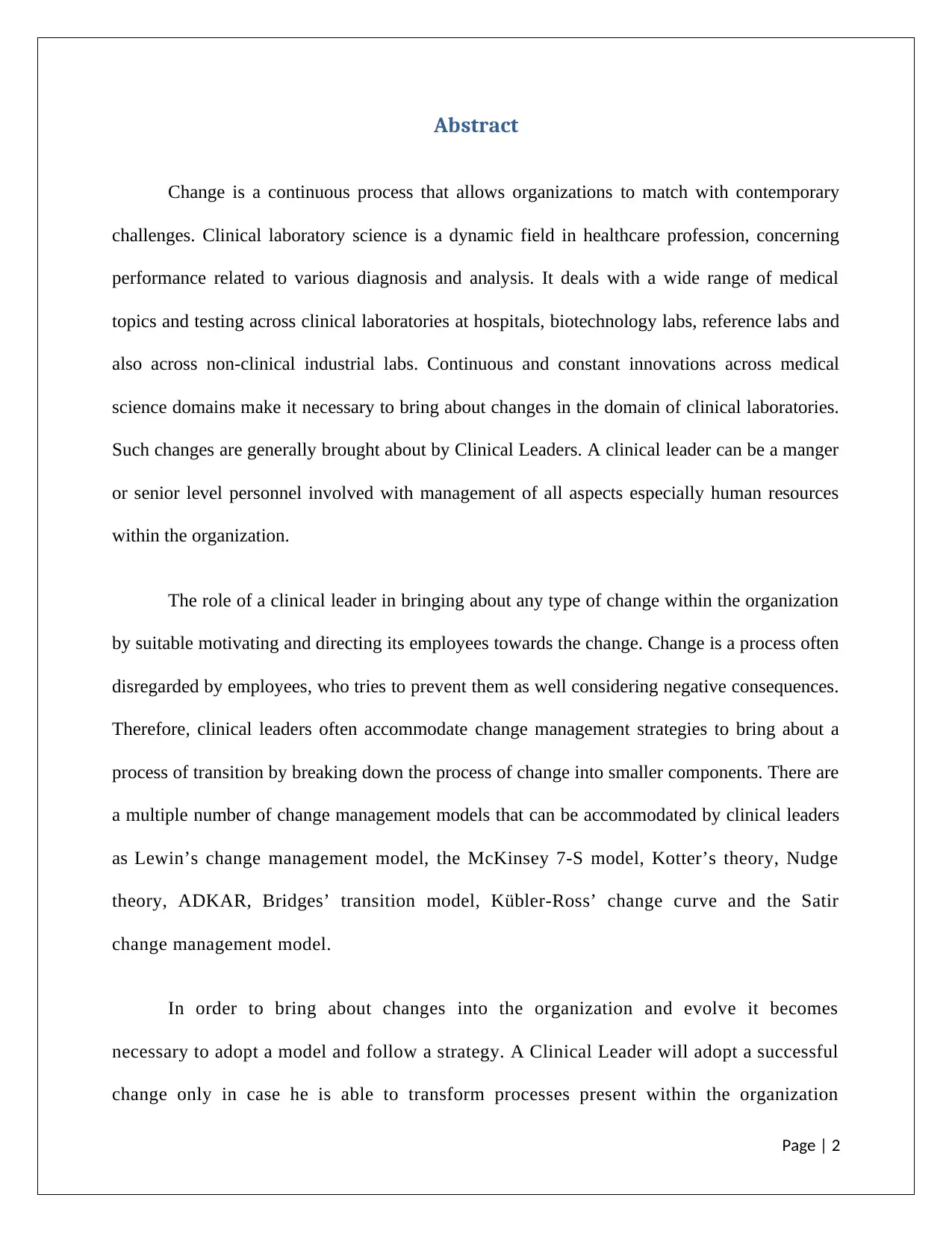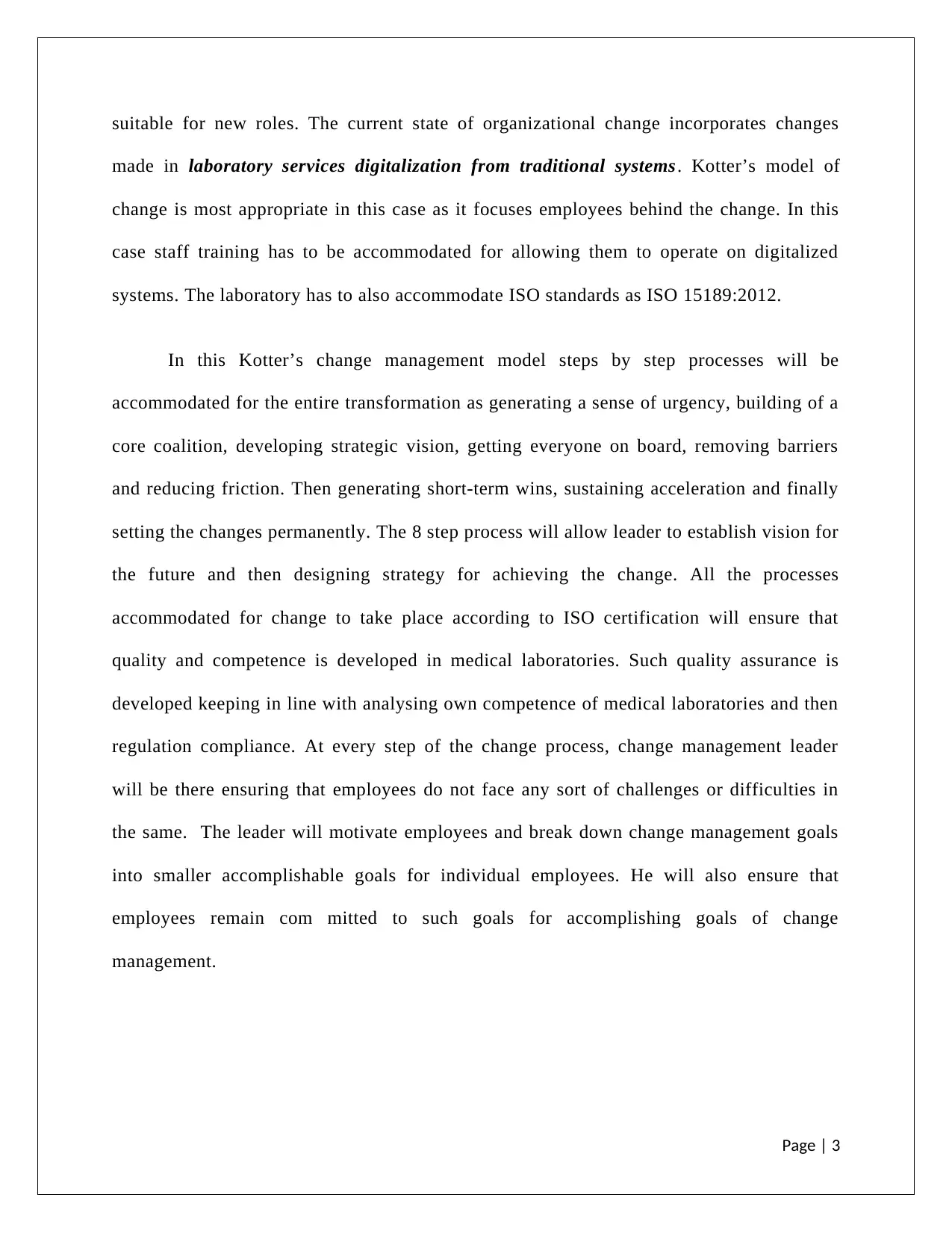Change Management in Clinical Laboratories: A Detailed Analysis
VerifiedAdded on 2021/04/17
|4
|585
|63
Report
AI Summary
This report examines the crucial topic of change management within clinical laboratories, emphasizing the need for adaptation in response to advancements in medical science and the digitalization of laboratory services. It highlights the role of clinical leaders in facilitating these changes, particularly through strategies that address employee concerns and promote a smooth transition. The report focuses on the application of Kotter's change management model, detailing its eight-step process for implementing changes related to digitalization and compliance with ISO 15189:2012 standards. It stresses the importance of generating a sense of urgency, building a coalition, developing a vision, removing barriers, generating short-term wins, and sustaining acceleration to ensure the successful integration of new systems and practices. The report also underscores the significance of quality assurance and the role of clinical leaders in supporting employees throughout the change process, ensuring that the goals are achievable and that employees remain committed to the transformation.
1 out of 4











![[object Object]](/_next/static/media/star-bottom.7253800d.svg)